Springtime in Nevada is for the Birds
March – April 2019
Six prime hotspots for watching feathered friends.
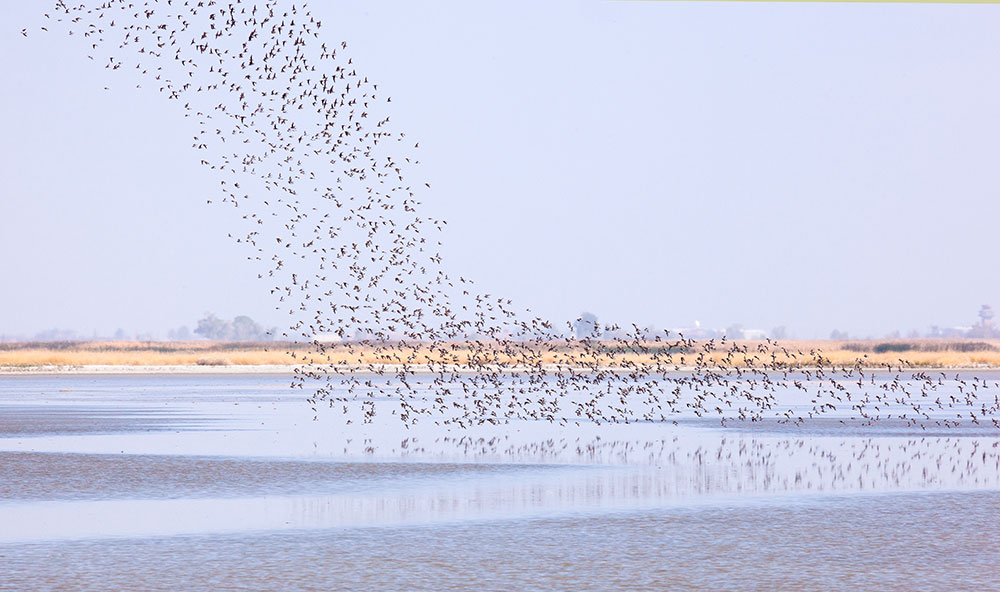
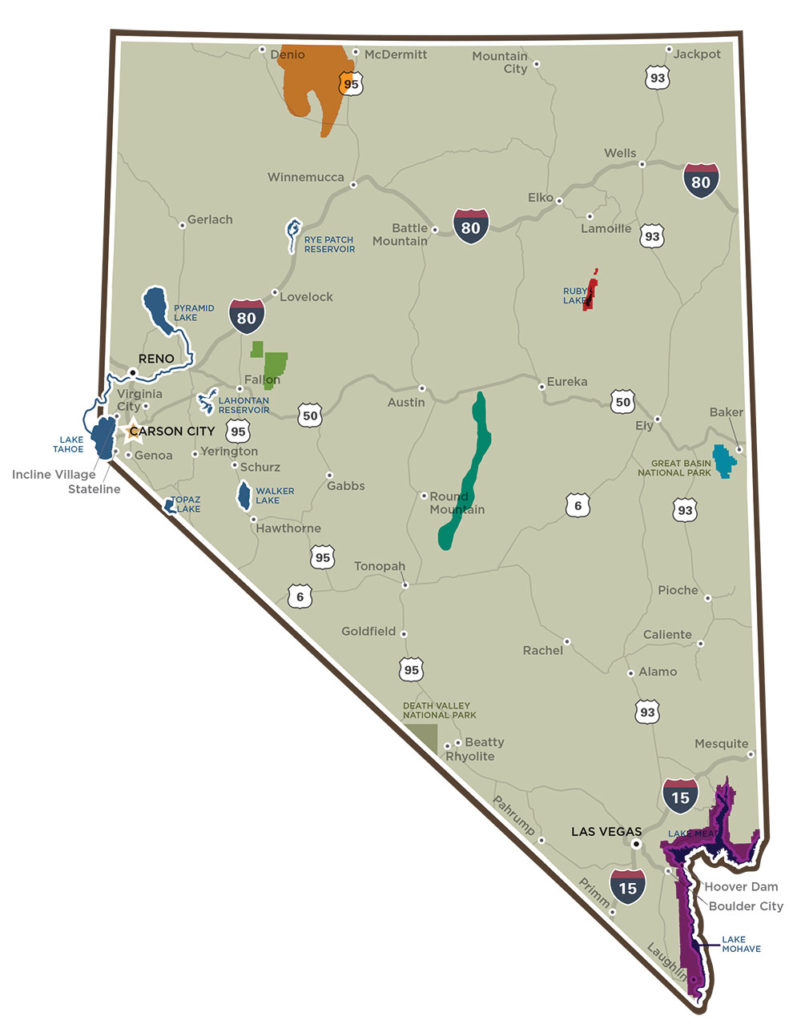
BY ANGELA MINOR
Nevada’s vast and diverse landscape holds many secrets, not the least of which is its popularity with birds. Our feathered friends are not only populous in numbers, they are increasingly popular as evidenced by the rising use of “birding” and “birders,” two words that do not appear in the dictionary, but are proof of this ever-growing hobby.
While it may come as a surprise to some, the number of recorded bird species visiting, breeding, or living in the state is a whopping 488. During the spring and fall, hundreds of thousands of those birds following the north-to-south path from Alaska to Patagonia—the Pacific Flyway—can be seen throughout the Silver State.
However, Nevada is rarely on a birder’s bucket list. In fact, according to the Great Basin Bird Observatory, a nonprofit science-based organization, Nevada is one of the most under-birded areas in the country.
It’s time to change that. Here are six birding locations across the state that are ready for exploration. Grab your camera and your binoculars, and get ready to experience why springtime in Nevada is perfect for the birds.
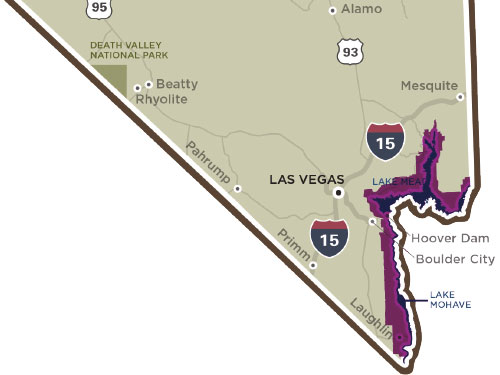 LAKE MEAD NATIONAL RECREATION AREA
LAKE MEAD NATIONAL RECREATION AREA
“Clark County is one of the ‘birdiest’ in the country,” says Alex Harper, member of the Nevada Birds Record Committee, a data-keeping group that is part of the Great Basin Bird Observatory. “With more than 400 species recorded, the Las Vegas area is more than The Strip. Pick any direction away from the city and you’ll find wild and public spaces.”
More than 1.5 million acres of land in southern Nevada fall within the Lake Mead National Recreation Area. This is a landscape of extremes and diversity including a variety of Mojave Desert scrub, 180,000 acres of reservoir waters, washes with lush acacia thickets, slot canyon cliffs, 40 freshwater springs, and 950 miles of shoreline riparian habitat.
It is also an Audubon-designated Important Bird Area (IBA). This classification is used to “identify, monitor, and protect the most important places for birds” according to Audubon’s website.
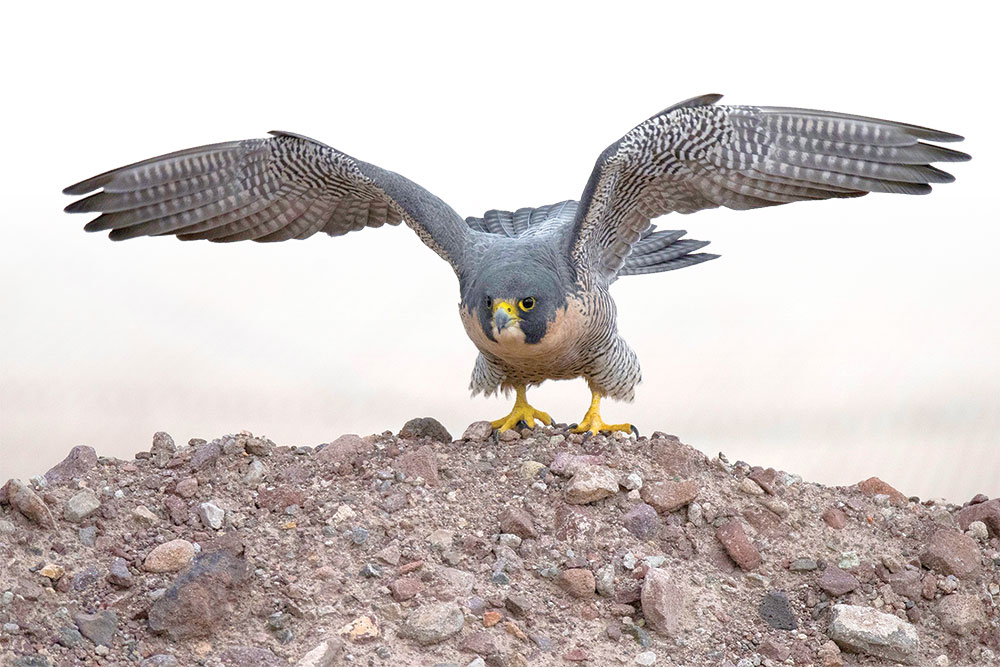
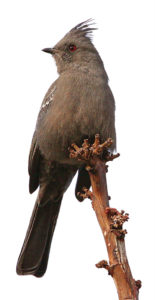
Birds to watch for:
• Western and Clark’s Grebes
• Lucy’s Warbler
• Phainopepla
• LeConte’s Thrasher
• Scott’s Oriole
• Cassin’s Kingbird
• Yellow-billed and Pacific Loons (rare)
• White-winged Scoter
• California Gull
• Gilded Flicker
• Peregrine Falcon
 MUST-SEE: The Henderson Bird Viewing Preserve is an unlikely urban birding gem. Nine ponds have paved (wheelchair accessible) and dirt walkways, benches, strategic vantage points, and an elevated platform—all for wildlife watching. Check in at the visitor’s center for the latest sightings.
MUST-SEE: The Henderson Bird Viewing Preserve is an unlikely urban birding gem. Nine ponds have paved (wheelchair accessible) and dirt walkways, benches, strategic vantage points, and an elevated platform—all for wildlife watching. Check in at the visitor’s center for the latest sightings.
 Nature Note: “Birds can veer from their migration routes or get blown off course during weather events,” says Ben Zyla, guide with Bird Las Vegas which offers custom birding trips in the Las Vegas area. “In the desert, they head for any patch of green. These can be hard to find, so areas like the Corn Creek Visitor Center or Floyd Lamb Park [both north of the city] or the town of Primm [on Interstate 15 at the California border] funnel migratory birds. These areas also pull in lost or roaming species not usually found in the region.”
Nature Note: “Birds can veer from their migration routes or get blown off course during weather events,” says Ben Zyla, guide with Bird Las Vegas which offers custom birding trips in the Las Vegas area. “In the desert, they head for any patch of green. These can be hard to find, so areas like the Corn Creek Visitor Center or Floyd Lamb Park [both north of the city] or the town of Primm [on Interstate 15 at the California border] funnel migratory birds. These areas also pull in lost or roaming species not usually found in the region.”
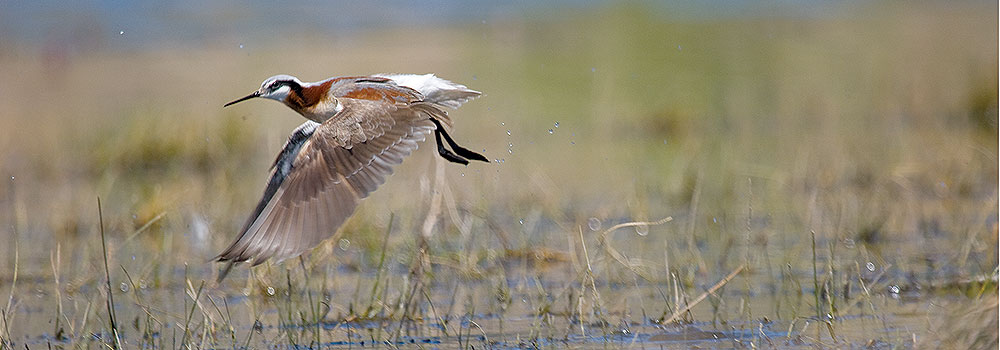
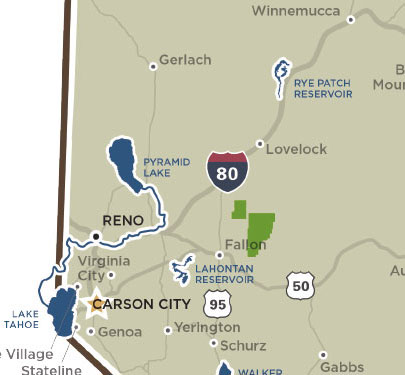 LAHONTAN VALLEY WETLANDS
LAHONTAN VALLEY WETLANDS
If you’re a shorebird or a waterfowl riding the Pacific Flyway over Nevada, chances are quite good that you’ll splash down somewhere in the Lahontan Valley Wetlands IBA, located near Fallon. Bird numbers reach 250,000 during any given migration event, and the area provides vital nesting and wintering habitat, as well.
Birds to watch for:
• Wilson’s Phalarope
• Baird’s and Pectoral Sandpipers
• Long-billed Curlew
• Long-billed Dowitcher
• Black-necked Stilt
• American White Pelican
• Canvasback
• Redhead
• White-faced Ibis
• American Avocet
• Snowy Plover

Insider Tips
South of Fallon (just west of Highway 95), the levee roads through Carson Lake Wetlands Area 1 are hotspots, according to Kathy.
“The Madsen Levee and Holmes Levee are the most productive. Each has an overview, and there will be information (at the gated entrance) about which roads are passable depending on water levels.”
 MUST-SEE: The wetlands within the Stillwater National Wildlife Refuge of this IBA can be explored via various boat launch points or by vehicle.
MUST-SEE: The wetlands within the Stillwater National Wildlife Refuge of this IBA can be explored via various boat launch points or by vehicle.
Kathy Oakes of the Lahontan Audobon Society says, “The one-way marked auto tour has dependable water much of the year. I would also recommend Harmon Reservoir, S-Line Reservoir, and Carson River Diversion Dam as side trips in the refuge.”
![]() Nature Note: Kathy says, “The diversity of habitats in western Nevada is tremendous and ensures that birders will see many different species. The forested habitats that include the Carson Range IBA on the east side of the Sierras have a great diversity of tree species: lodgepole pine, western white pine, Jeffrey pine, incense cedar, mountain hemlock, red fir, and sugar pine. Many of the other lower mountain ranges support fine areas of pinyon and juniper pines. Each of these habitats will have different groups of birds each season. From these diverse habitats, the checklist for northwestern Nevada shows 287 birds.”
Nature Note: Kathy says, “The diversity of habitats in western Nevada is tremendous and ensures that birders will see many different species. The forested habitats that include the Carson Range IBA on the east side of the Sierras have a great diversity of tree species: lodgepole pine, western white pine, Jeffrey pine, incense cedar, mountain hemlock, red fir, and sugar pine. Many of the other lower mountain ranges support fine areas of pinyon and juniper pines. Each of these habitats will have different groups of birds each season. From these diverse habitats, the checklist for northwestern Nevada shows 287 birds.”
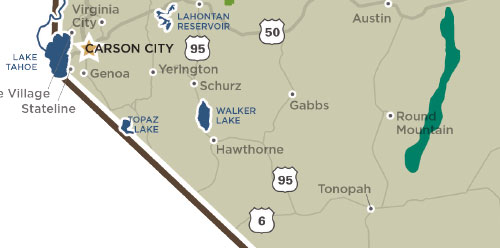 MONITOR VALLEY IBA
MONITOR VALLEY IBA
Is embracing the adventure of rugged travel to bird in isolated areas where few people wander your gig? Then, Monitor Valley IBA is your destination.
It is “an opportunity to see remote Nevada like many people may not have experienced, with some spectacular scenery,” Kathy says.
Navigating the terrain requires a 4WD vehicle with high clearance, and the usual off-road travel precautions should be taken. This IBA lies in the center of the state, roughly between Austin in the north and Tonopah in the south. From the valley floors to the surrounding peaks, habitat diversity and protected public lands support hundreds of avian species.
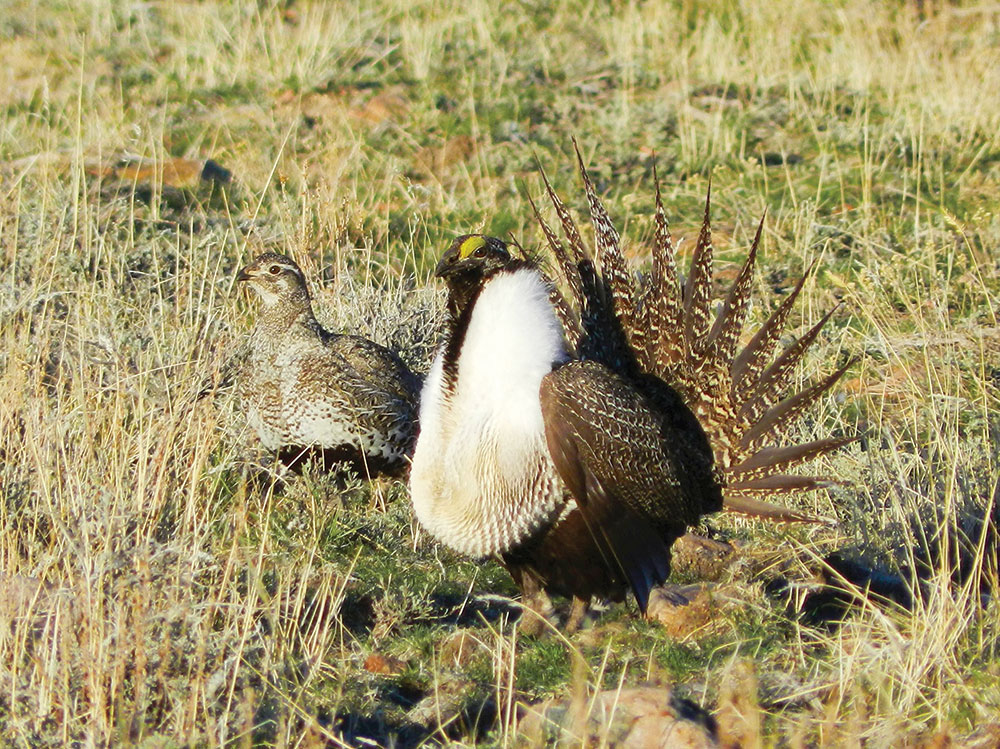
Birds to watch for:
• Sage Thrasher
• Black-throated Gray Warbler
• Gray Flycatcher
• Sagebrush Sparrow
• Red-naped Sapsucker
• Northern Goshawk
• Golden Eagle
• Pinyon Jay (nomadic)
• Greater Sage-Grouse (significant population)
Insider Tips
The road through the valley “is graded gravel and usually passable (more challenging in wet spring seasons). For very good late-spring migrant birding, take secondary roads off the main Monitor Valley road,” Kathy shares. Local favorite birding spots include “any of the major canyons off the west side of the valley into the Toquima Range. Also, the roads that cross the Monitor Range in the northern part of the valley (with access to Antelope Valley).”
 Nature Note: “Perennial streams enter both sides of the valley from the Monitor and Toquima Ranges and support narrow montane riparian corridors. Aspen stands in these areas also provide great late spring and summer habitat for a variety of birds,” Kathy notes.
Nature Note: “Perennial streams enter both sides of the valley from the Monitor and Toquima Ranges and support narrow montane riparian corridors. Aspen stands in these areas also provide great late spring and summer habitat for a variety of birds,” Kathy notes.
GREAT BASIN NATIONAL PARK
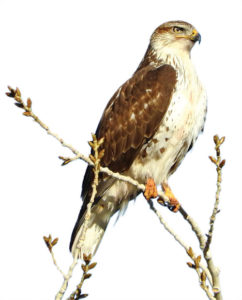
The vastness of time and space is almost palpable in Great Basin National Park in eastern Nevada. The oldest known individual living organisms on Earth call this park home. Ancient subterranean cave systems honeycomb through the area. Mountain peaks reach up to 13,000 feet, and a night canopy of some of the darkest skies in the continental United States drapes quietly overhead.
For spring birding, five of the seven Merriam’s life zones of North America bring numerous neotropical migrants to and through Great Basin.
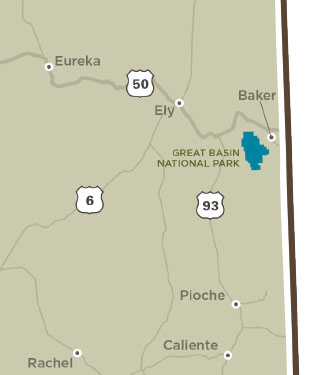
Birds to watch for:
• Calliope Hummingbird
• Red-naped Sapsucker
• Black-throated Gray, MacGillivray’s, Orange-crowned, and Wilson’s Warblers
• Yellow-breasted Chat
• Black Rosy-Finch
• American Three-toed Woodpecker
• Ferruginous Hawk
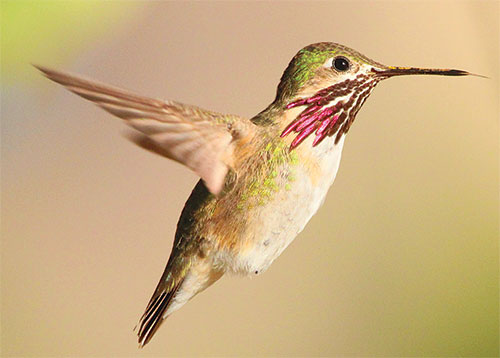
Insider Tips
Nevada wildlife biologist and Red Rock Audubon volunteer Brandon Miller says start at the “visitor center area and travel along the Wheeler Peak Scenic Drive to the campgrounds [in the northeastern section of the park]. Any pull-off or trail
offers great birding.”
 MUST-SEE: The “first research grade observatory built in a U.S. National Park” happened in 2015 at Great Basin due to the fact there is “no significant man-made light for 70 miles in all directions,” according to greatbasinobservatory.org. Stay the night in one of the many campground facilities, point those binoculars and bird scopes up, and witness the cosmos.
MUST-SEE: The “first research grade observatory built in a U.S. National Park” happened in 2015 at Great Basin due to the fact there is “no significant man-made light for 70 miles in all directions,” according to greatbasinobservatory.org. Stay the night in one of the many campground facilities, point those binoculars and bird scopes up, and witness the cosmos.
![]() Nature Note: The lifespan of a Bristlecone Pine can exceed 5,000 years, making these trees the longest known living organism on the planet. Known for their highly unique appearances, shaped by wind, sand, ice, and other forces, they thrive in the most difficult circumstances.
Nature Note: The lifespan of a Bristlecone Pine can exceed 5,000 years, making these trees the longest known living organism on the planet. Known for their highly unique appearances, shaped by wind, sand, ice, and other forces, they thrive in the most difficult circumstances.
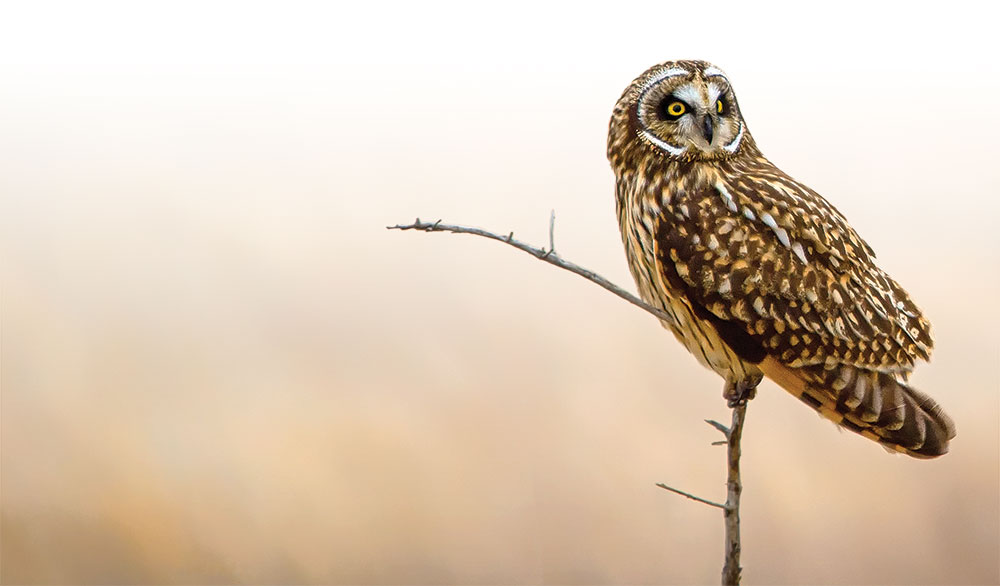
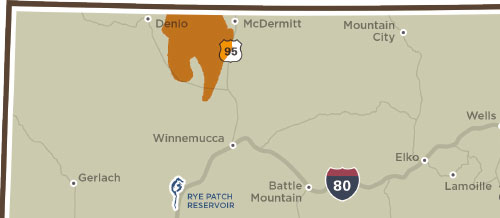 BILK CREEK–MONTANA MOUNTAINS IBA
BILK CREEK–MONTANA MOUNTAINS IBA
Overlapping the Oregon border near Denio (population 47) is the rugged Bilk Creek–Montana Mountains global IBA. Exceeding 500,000 acres, this remote landscape is mainly sagebrush-steppe and sagebrush.
According to Audubon, this location supports the largest state population of sage- grouse, with one of the highest densities in the U.S. Additionally, hundreds of species migrate, breed, and reside in this IBA and the surrounding lands.
Birds to watch for:
• Greater Sage-Grouse
• Sage Thrasher
• Gray Flycatcher
• Vesper Sparrow
• Juniper Titmouse
• Green-tailed Towhee
• Lesser Yellowlegs
• Greater White-fronted Goose
• Swainson’s Hawk
• Short-eared Owl
Insider Tips
Kathy Oakes says to check along the Quinn River and Kings River Valley for bird diversity.
“Most secondary roads are likely limited to 4WD high-clearance vehicles, and getting stranded a long way from help is a distinct possibility. It’s an interesting place if you love the remoteness of northwestern Nevada.”
 MUST-SEE: For a comparable experience in sagebrush-steppe ecosystems (with easier access), travel a few miles west to the Sheldon National Wildlife Antelope Refuge. This location offers more amenities in a solitude-immersed wilderness. Inquire at the refuge headquarters about seeing the elaborate spring dances of the sage-grouse in their traditional mating areas called “leks.”
MUST-SEE: For a comparable experience in sagebrush-steppe ecosystems (with easier access), travel a few miles west to the Sheldon National Wildlife Antelope Refuge. This location offers more amenities in a solitude-immersed wilderness. Inquire at the refuge headquarters about seeing the elaborate spring dances of the sage-grouse in their traditional mating areas called “leks.”
![]() Nature Note: The high desert of northern Nevada is home to a number of protected, threatened, and endangered species, including birds, fish, plants, and mammals.
Nature Note: The high desert of northern Nevada is home to a number of protected, threatened, and endangered species, including birds, fish, plants, and mammals.
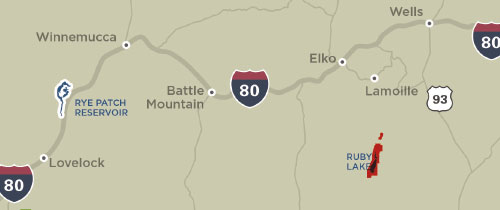 FRANKLIN LAKE IBA & RUBY LAKE NATIONAL WILDLIFE REFUGE
FRANKLIN LAKE IBA & RUBY LAKE NATIONAL WILDLIFE REFUGE
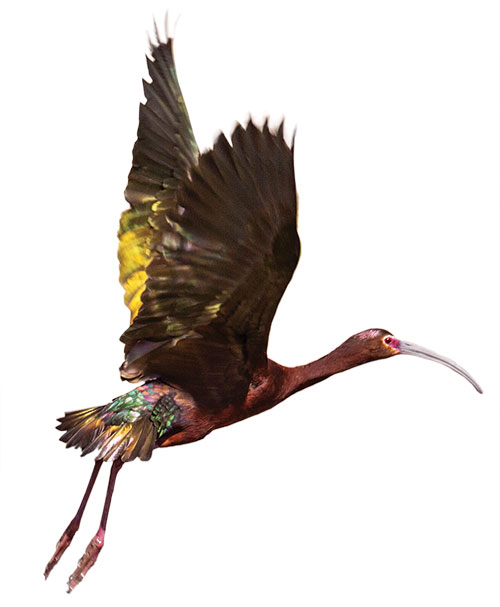
These sister locations of open water, marsh, islands, riparian habitat, meadows, grasslands, and shrub-steppe sit at 6,000 feet and include more than 200 pristine springs. Fifteen thousand acres of seasonal wetlands in the Franklin Lake IBA and 37,632 acres within Ruby Lake NWR (one of the most remote refuges in the continental U.S.) are 5 miles apart and 65 miles south of Elko in northeastern Nevada.
The Ruby Mountains rise in the west to elevations of 11,000 feet, and add forested mountain slopes, canyons, and cliffs to the landscape. More than 225 bird species occupy these ecosystems throughout the year. In springtime, this area provides critical food, resting, and nesting resources for a significant population of migratory birds both in numbers and species.

Birds to watch for:
• American Avocet
• White-faced Ibis
• Black, Caspian, and Forster’s Terns
• Canvasback
• Redhead
• Sage, Vesper, Brewer’s, and Savannah Sparrows
• Yellow-headed Blackbird
• Violet-green Swallow
• Golden Eagle
• Prairie Falcon
• Greater Sage-Grouse (year-round)
Insider Tips
This vast wetland basin contains the highest quality habitat (in the continental U.S.) for Canvasback nesting west of the Mississippi River. Specifically, visit the Ruby Lake NWR South Marsh. At midpoint in the refuge, an auto tour road provides viewing opportunities. For birding by water, there are two boat ramp access points with marker poles for a channel navigation route. Visit the refuge headquarters for a detailed trail map to locate quiet ponds.
![]() Nature Note: The once-endangered Trumpeter Swan, North America’s largest waterfowl, now successfully raises young at Ruby Lake NWR. Due to sustained protection and planned reintroduction of the species, several pairs still reside and nest in this area.
Nature Note: The once-endangered Trumpeter Swan, North America’s largest waterfowl, now successfully raises young at Ruby Lake NWR. Due to sustained protection and planned reintroduction of the species, several pairs still reside and nest in this area.
In all, there are 40 Audubon Important Bird Areas in Nevada, 36 with state priority classification and four with global priority status. This translates to approximately 16,585 miles just waiting for birders with binoculars, boots, and field guide books.
BIRDS OF A FEATHER
Thanks to the following organizations for sharing Nevada spring migration birding information:
Lahontan Audubon Society
nevadaaudubon.org
Red Rock Audubon Society
redrockaudubon.com
Great Basin Bird Observatory
gbbo.org
Nevada Birds Record Committee
gbbo.org/nbrc
Bird Las Vegas
birdlasvegas.com


